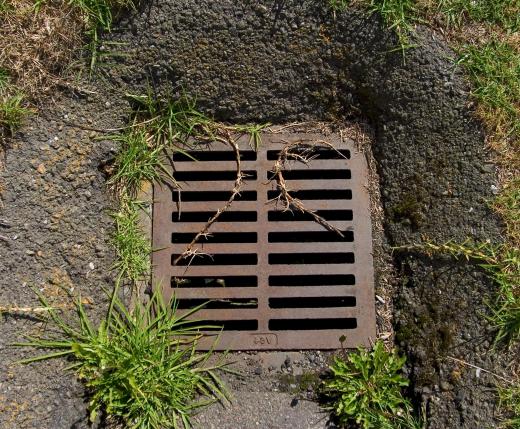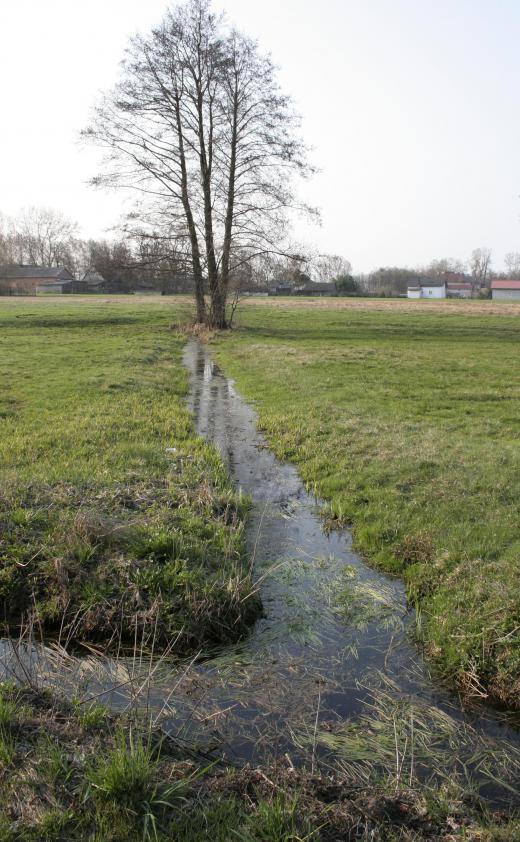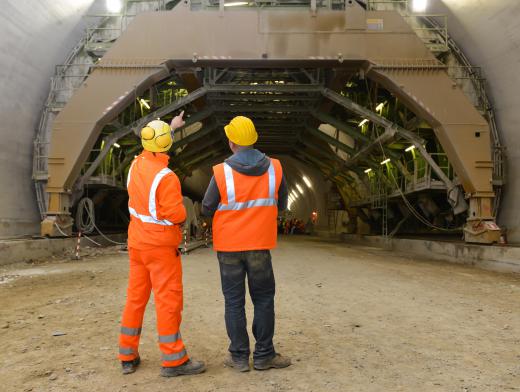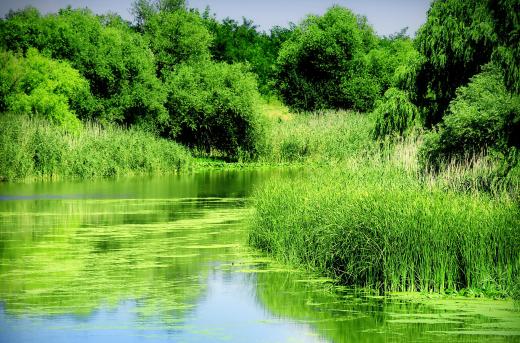What Are the Different Types of Drainage Design?
Drainage design might include open or closed channels, culverts, detention ponds, and other methods to control storm water while protecting soil. As a branch of civil engineering, drainage design is typically required on all public and private construction projects to manage water flow as protection against flooding. Drainage design might also be used by backyard gardeners when building an irrigation system.
Detention or recharge basins address the potential damage to land, property, and water quality. These basins hold storm run-off and allow it to slowly seep into the earth instead of rushing downstream. Detention basin drainage design typically uses studies on annual rainfall to determine the size of the pond and amount of water it needs to collect. These basins not only help control flooding, they might prevent soil erosion and sediment movement that might contaminate streams and rivers.

Closed drainage systems typically appear in urban areas that are heavily populated. Underground sewer and water pipes carry rain water and waste water to facilities for treatment. Drainage devices are built into curbs and gutters to handle storm run-off while keeping streets clear for use. Some drainage design plans use grates built into the pavement to handle water.

Highway drainage plans in rural areas look for ways to divert water from the pavement to improve visibility and safety for motorists. Drainage systems might be built in the median or via earthen dams on the edges of roadways. These dams form a natural gutter to collect surface water until it seeps into the ground.
Open ditches adjacent to highways represent another form of drainage design used by highway engineers. These ditches might divert water away from the road into wetlands or open fields, and can be stabilized with various materials. Channels might be lined with vegetation or cement, and is generally desired on slopes where erosion might occur.

Design standards aim to prevent hydroplaning on highways from pools of standing water. Engineers determine the amount of splashing that might occur during the rainy season and how it affects driver visibility and safety. The average speed on various portions of the highway might be used in drainage design plans. Engineers use mathematical formulas to determine the grade of the roadway while preparing drainage plans.

Drainage design typically requires hydrology studies using computer models to gauge rainfall amounts. Engineers use flow studies to determine velocity at peak flow and depth of water. Formulas can be used to determine pipe diameter or culvert size to handle expected storm water. Some regions employ different standards for 10-year, 50-year, and 100-year flood conditions by looking at historical records.
AS FEATURED ON:
AS FEATURED ON:

















Discuss this Article
Post your comments